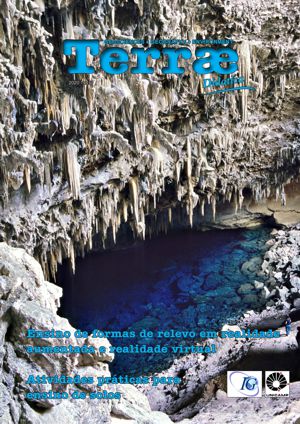Resumen
Mi argumento en este artículo será que la naturaleza en general, y la naturaleza humana en particular, sugiere que, en principio, es posible derivar la flecha del tiempo causal de varias otras flechas físicas del tiempo en la naturaleza que parecen ser fenómenos unidireccionales e irreversibles. . Un argumento más concreto será que la suposición de una flecha de tiempo causal a la que recurren los geólogos en todas las explicaciones geohistóricas aparentemente se origina en flechas de tiempo geohistóricas ocultas en procesos físico-geológicos unidireccionales e irreversibles. Ilustraré esta afirmación con algunos ejemplos de explicaciones geohistóricas en la teoría de la tectónica de placas, la mayoría de las cuales se basan en procesos físicos y geológicos irreversibles. Mi argumento final es más amplio, de naturaleza epistemológica, según el cual la suposición de una flecha de tiempo causal utilizada en explicaciones lógico-causales en la vida cotidiana y en la ciencia aparentemente "deriva" de alguna manera de la flecha del tiempo geohistórico. Basaré este argumento en la relación causal y en la influencia mutua que ocurre en la naturaleza entre los procesos geohistóricos y evolutivos en los animales, incluidos el cerebro humano y los procesos de desarrollo del cerebro. De este argumento reduccionista, bien integrado en el marco de la Epistemología Evolutiva, es posible derivar una gran cantidad de argumentos naturalistas según los cuales, en principio, las leyes de la física geohistórica pueden reducirse a las leyes de la lógica y la causalidad.
Citas
Baker, V. R. (2014). Terrestrial analogs, planetary geology, and the nature of geological reasoning. Planetary and Space Science 95, 5-10. doi: 10.1016/j.pss.2012.10.008.
Barnes, J. (1990). The Toils of Scepticism. Cambridge University Press, Cambridge,161 p.
Bergmann, S. H. (1972). Introduction to the Theory of Knowledge. The Hebrew University Magnes Press, Jerusalem. 318p.
Bonjour, L. (2009). Epistemology: Classic Problems and Contemporary Responses. Rowman & Littlefield Publishers, Inc., Lanham, Maryland. 331p.
Bradie, M., Harms, W. (2015). Evolutionary epistemology. In Zalta, E. N. (Ed.). (2015). Stanford Encyclopedia of Philosophy. http://plato.stanford.edu/archives/sum2015/entries/epistemology-evolutionary/. (Summer 2015 Ed.).
Campbell, D. T. (1974). Evolutionary epistemology. In: Paularthur, S. (Ed.). (1974). The Philosophy of Karl Popper. The Library of Living Philosophers, Inc., USA, pp. 413-463.
Chamberlin, T. C. (1890). The method of multiple working hypotheses. Science 15, 92-96.
Chamberlin, T. C. (1897). The nature of multiple working hypotheses. The Journal of Geology, 5, 837-848. doi: 10.1086/607980.
Chamberlin, T. C. (1904). The methods of Earth-Sciences. Popular Science Monthly, 66, 66-75.
Cleland, C. E. (2002). Methodological and epistemic differences between historical science and experimental science. Philosophy of Science 69 (3), 474-496.
Cleland, C. E. (2013). Common cause explanation and the search for a smoking gun. In: Baker, V. R. (Ed.). (2013). Rethinking the Fabric of Geology. Geological Society of America, Special Paper 502, pp. 1-9. doi: 10.1130/2013.2502(01).
Cooper, W. S. (2001). The Evolution of Reason: Logic as a Branch of Biology. Cambridge University Press, Cambridge, UK. 226p.
de Beauregard, O. C. (1963). Le second principe de la science du temps. Paris, Editions du Seuil.
Denbigh, K. G. (1989). The many faces of irreversibility. The British Journal for the Philosophy of Science, 40, 501-518.
Engelhardt, W., Zimmermann, J. (1988). Theory of Earth Science. Cambridge, UK, Cambridge University Press. 400p.
Evans, R. (1975). Konrad Lorenz: The Man His Ideas. New York, Harcourt Brace Jovanovich. 301p.
Feldman, R. (2003). Epistemology. New Jersey: Pearson Educ., Inc. 197p.
Gilbert, G.K. (1896). The origin of hypotheses. Science 3, 1-12.
Hempel, C., Oppenheim, P. (1948). Studies in the logic of explanation. Philosophy of Science 15, 135-175 (Reprinted in Hempel, 245-290, 1965a).
Kitts, D. B. (1977). The Structure of Geology. Dallas, SMU Press. 199p.
Kenaz, Y. (2010). Descartes, a Discourse on the Method (in Hebrew). The Books in the Attic Press, Tel-Aviv, Israel, 123 p.
Kravitz, G. (2012). Basic Assumptions of Geo-historical Thinking [Ph.D. dissertation].University of Haifa, Department of Philosophy, Haifa, Israel, 255 p (in Hebrew).
Kravitz, G. (2013). The thermodynamics time arrow and the logical function of the uniformity principle in geohistorical explanation. In: Baker, V.R. (Ed.), Rethinking the Fabric of Geology. Geological Society of America, Special Paper 502, pp. 19-40. doi: 10.1130/2013.2502(03).
Kravitz, G. (2014). The geohistorical time arrow: from Steno’s stratigraphic principles to Boltzmann’s past hypothesis. Journal of Geoscience Education 62, 691-700.
Peirce, C. S. (1867). On the natural classification of arguments. Proceedings of the American Academy of Arts and Sciences 7, 261-287.
Peirce, C. S. (1883). A theory of probable inference. In: Peirce, C.S. (Ed.), The Johns Hopkins Studies in Logic. Little and Brown and Co, Boston, pp. 126-181.
Poirier, J. P. (2000). Introduction to the Physics of the Earth’s Interior. Cambridge, Cambridge University Press. 312p.
Romano, M. (2015). Reviewing the term uniformitarianism in modern Earth Sciences. Earth Science Reviews, 148, 65-76.
Schumm, S. A. (1998). To Interpret the Earth: Ten Ways to Be Wrong. Cambridge University Press, Cambridge. 144p.
Stewart, J. A. (1990). Drifting Continents & Colliding Paradigms. Indiana University Press, USA. 285p.
Turcotte, D. L., Schubert, G. (2002). Geodynamics. New York, Cambridge University Press. 456p.
Yovel, Y. (2013). Immanuel Kant-critique of Pure Reason. Hakibbutz Hameuchad-Sifriat Poalim, Tel-Aviv. 654p. (in Hebrew, Translated with Introduction and Notes by Yirmiyahu Yovel).

Esta obra está bajo una licencia internacional Creative Commons Atribución-NoComercial 4.0.
Derechos de autor 2020 Terrae Didatica

